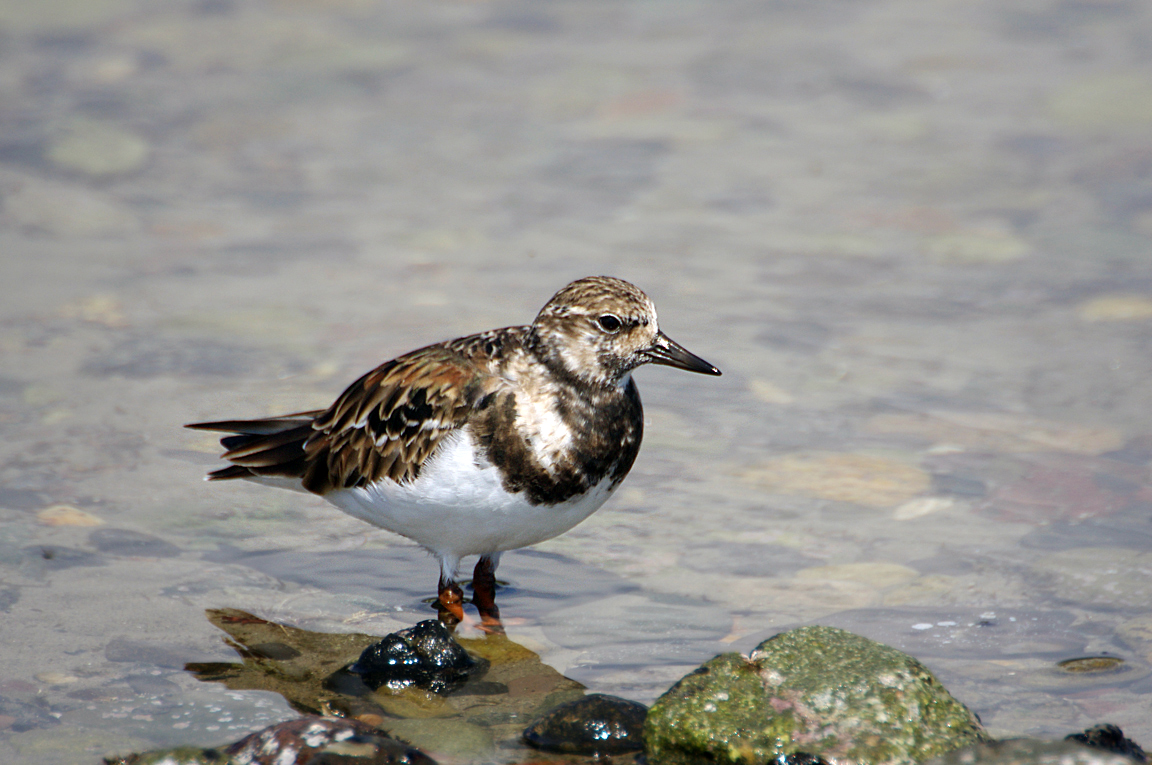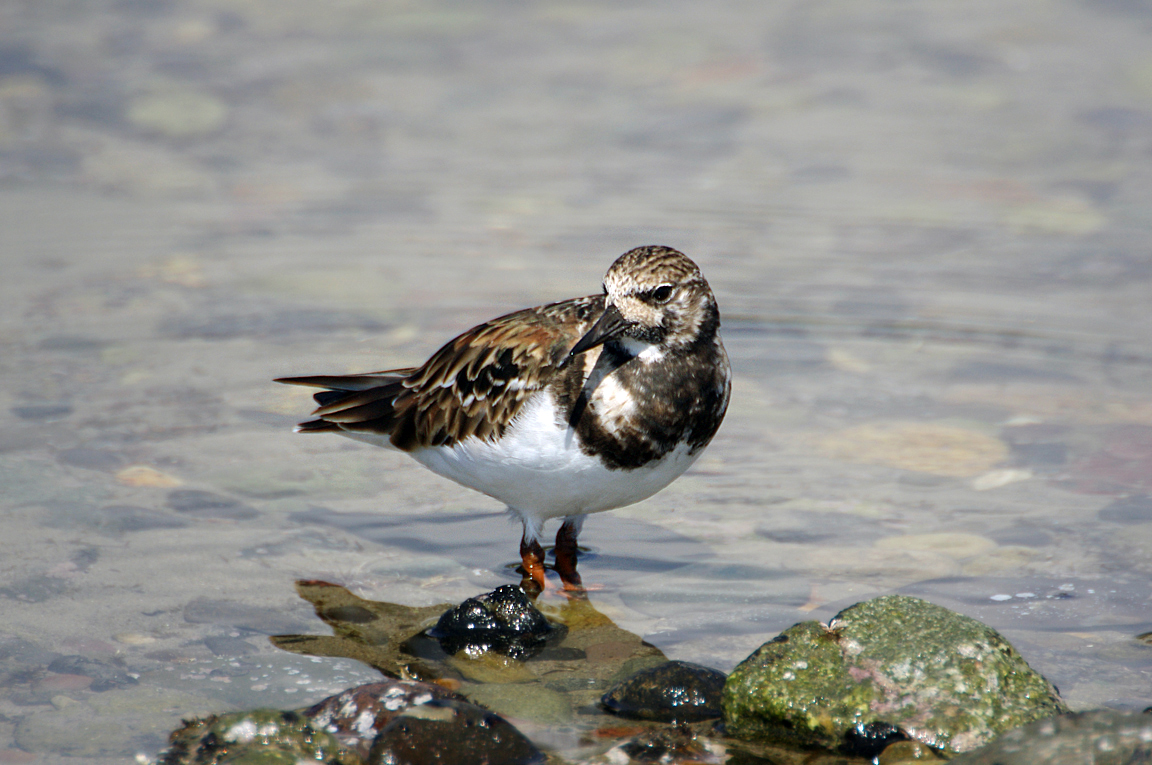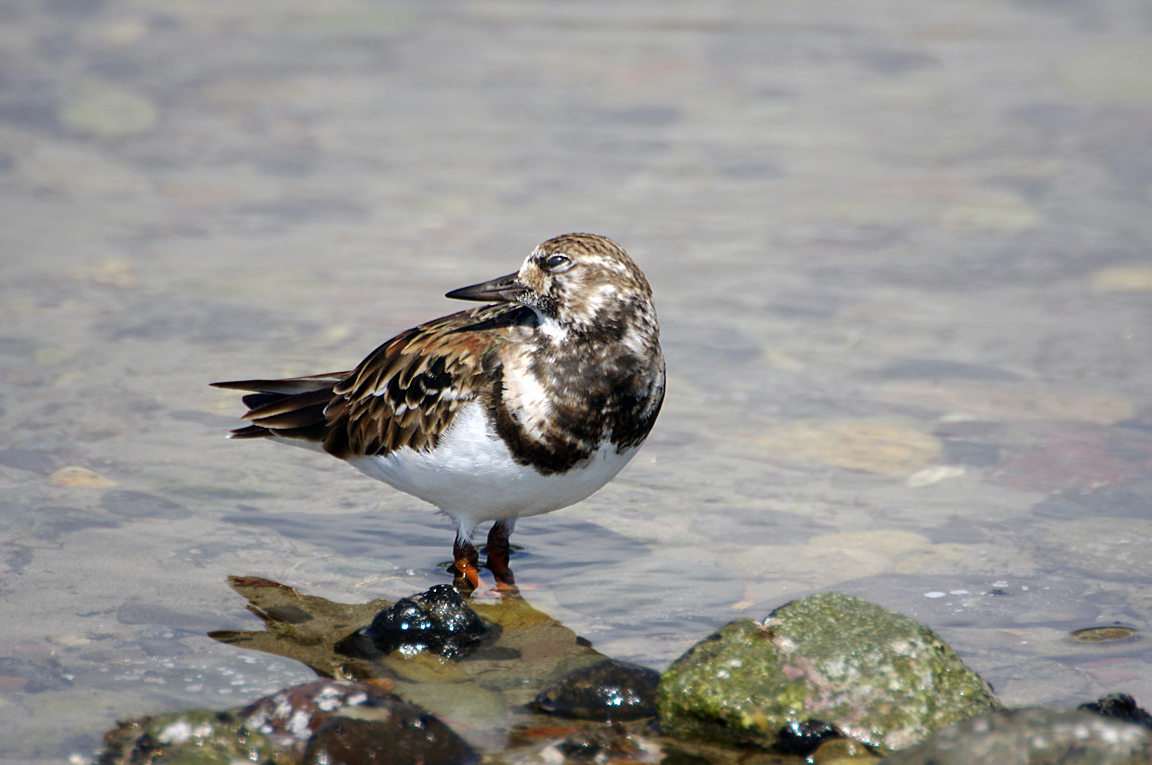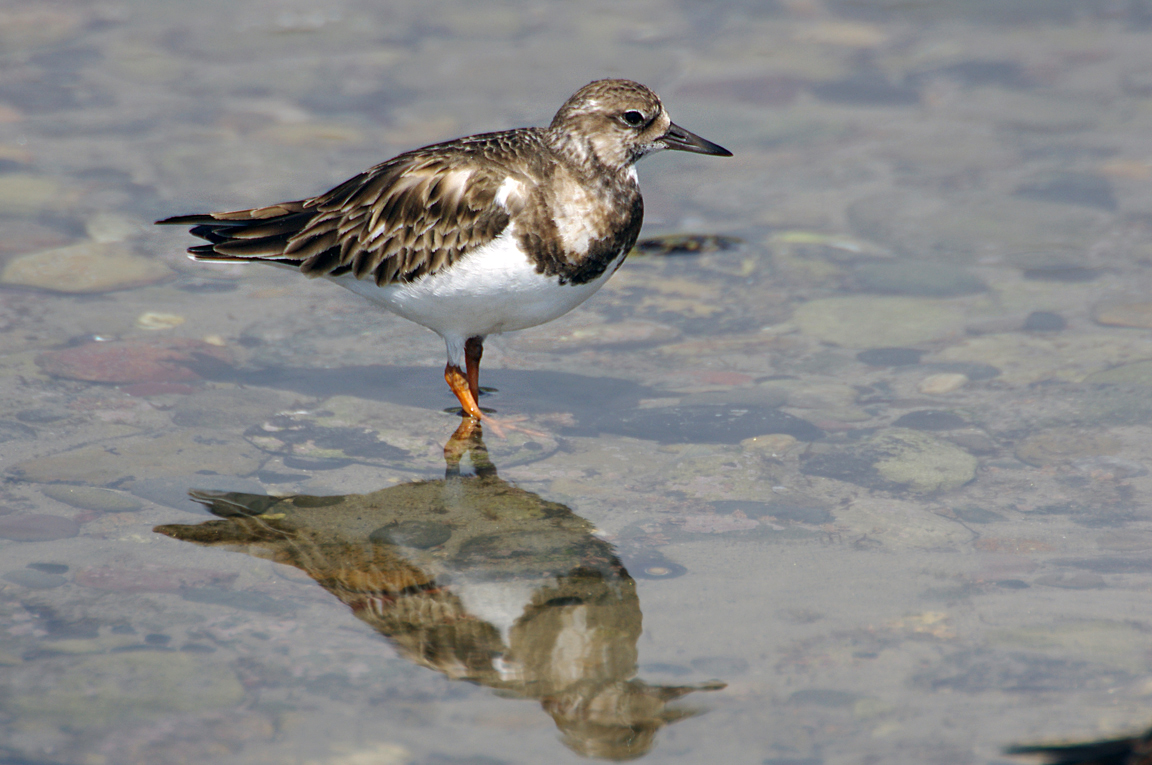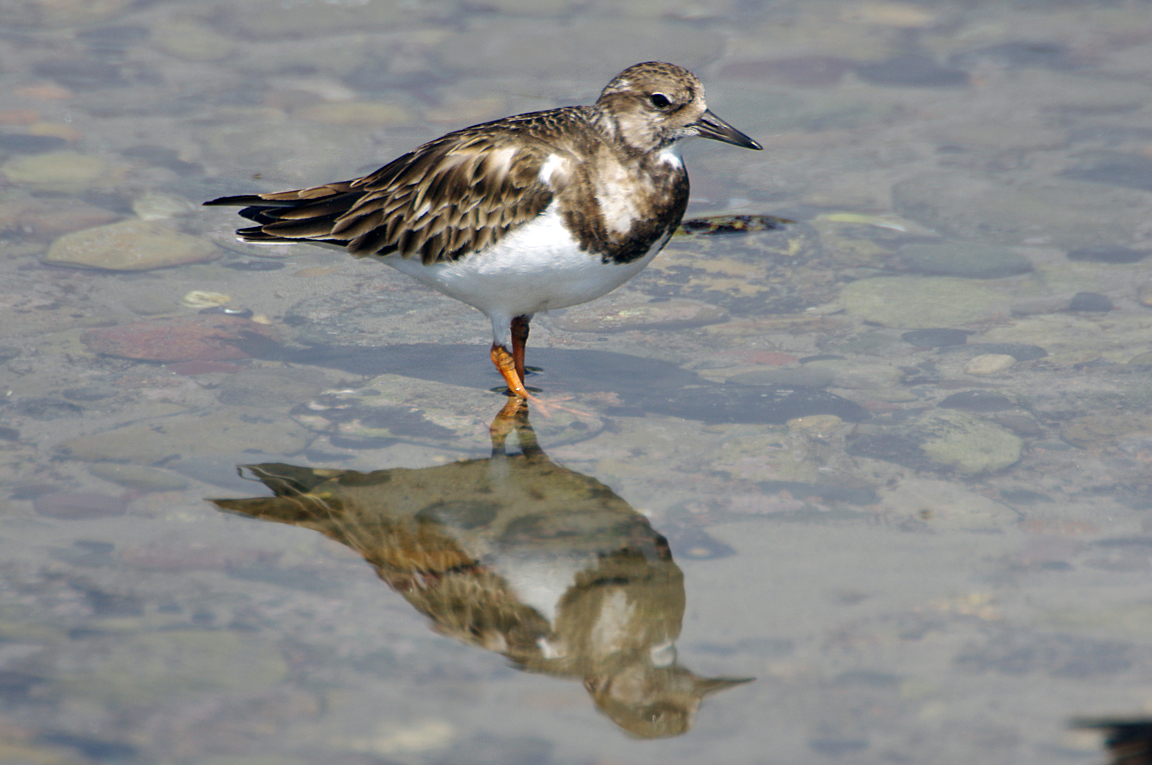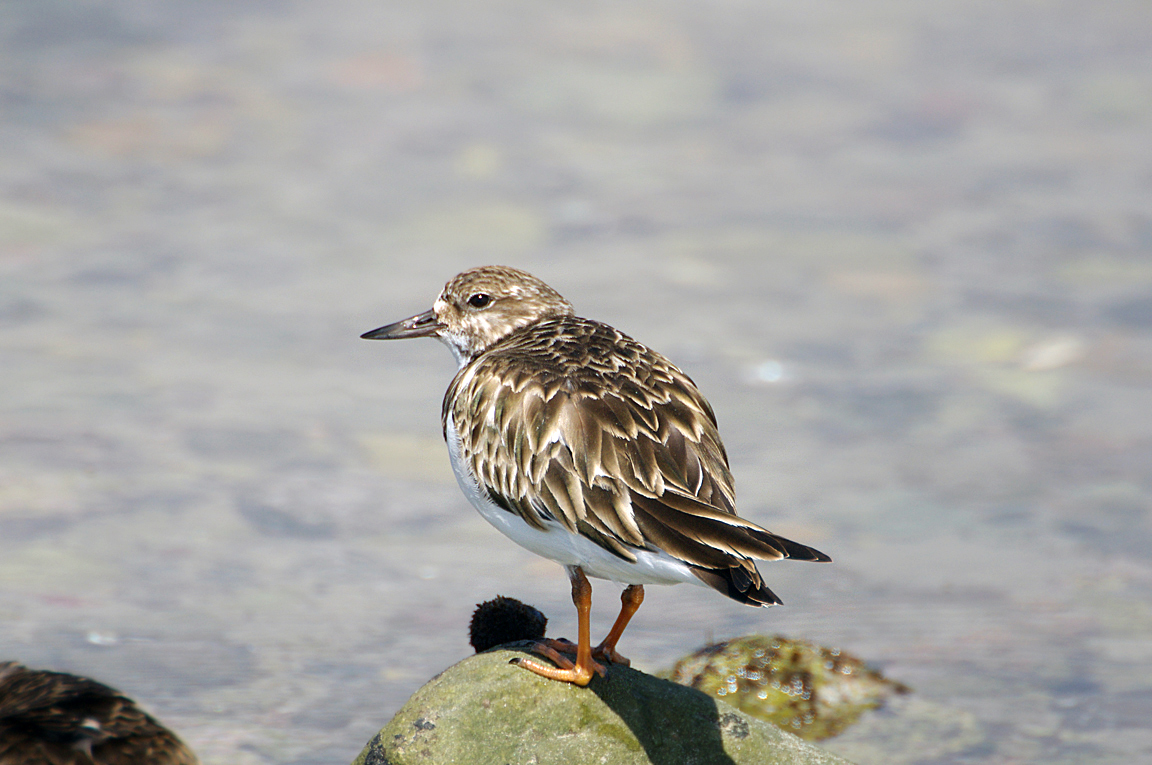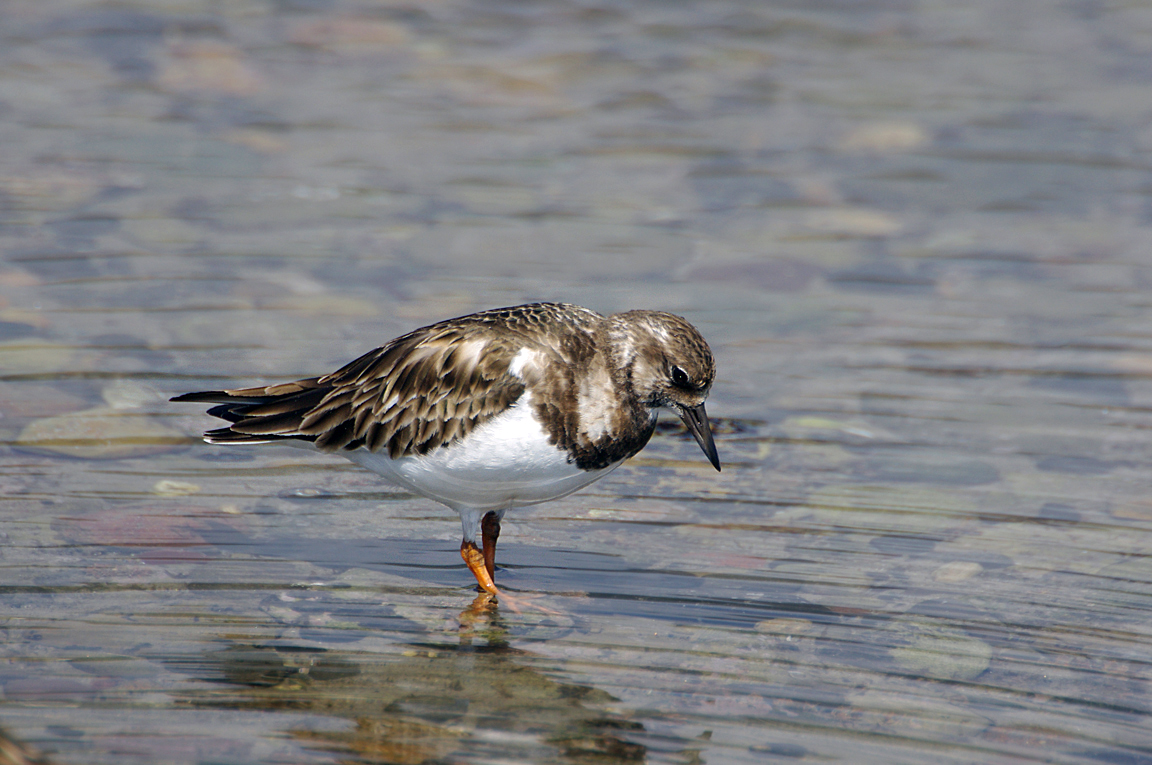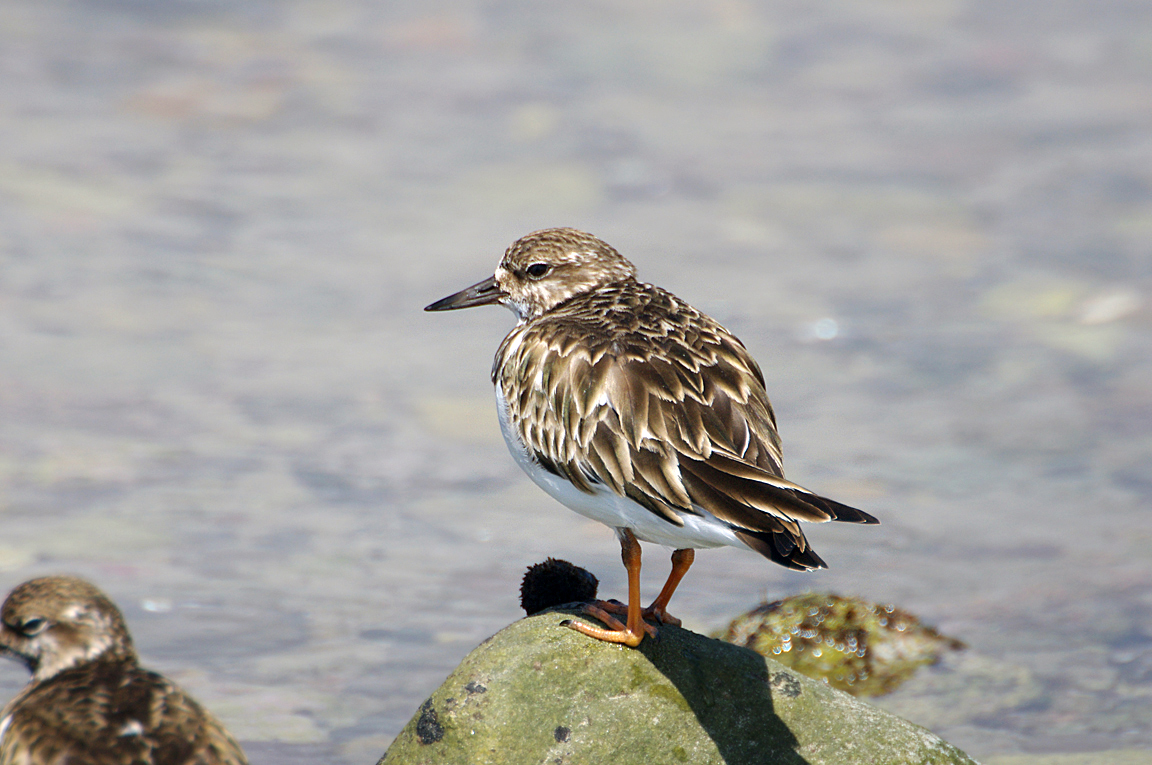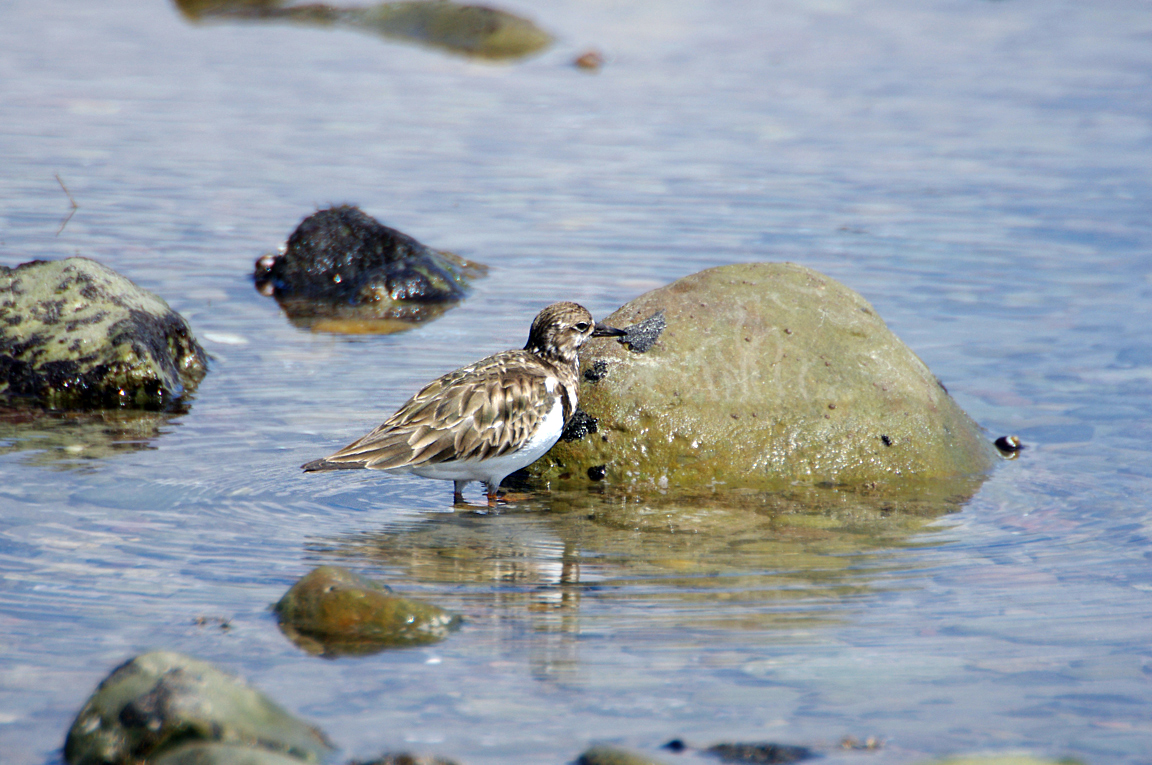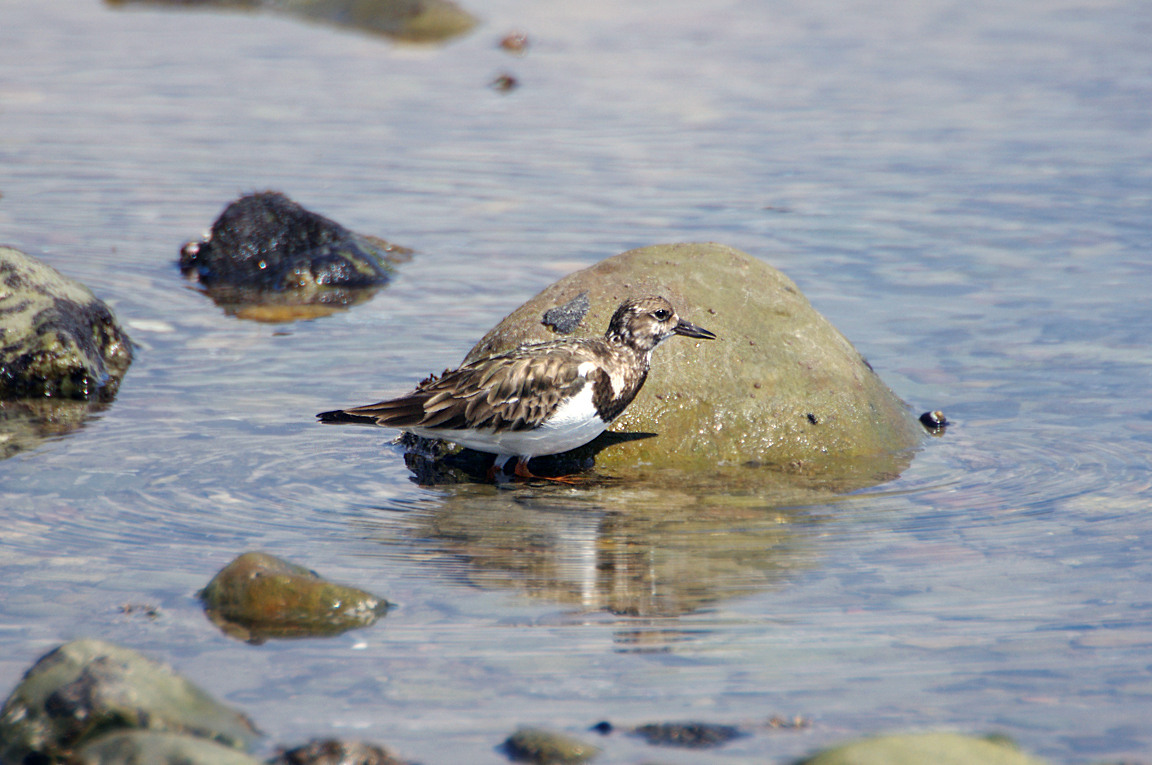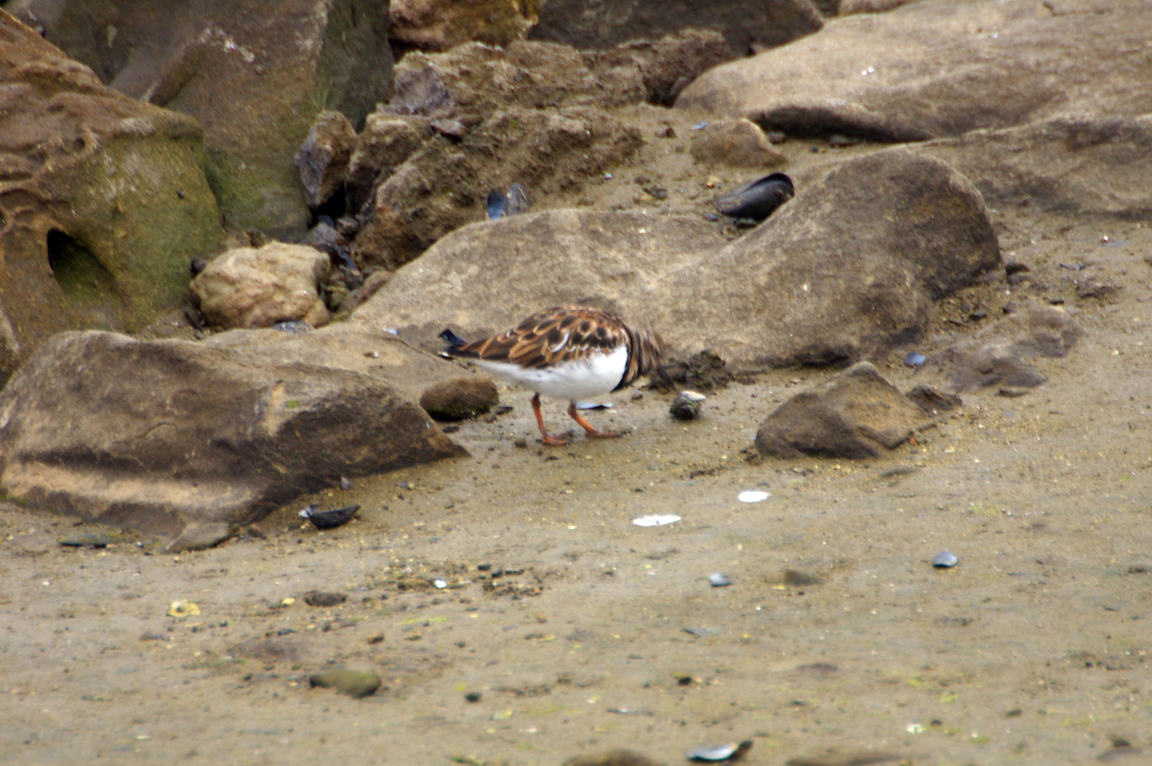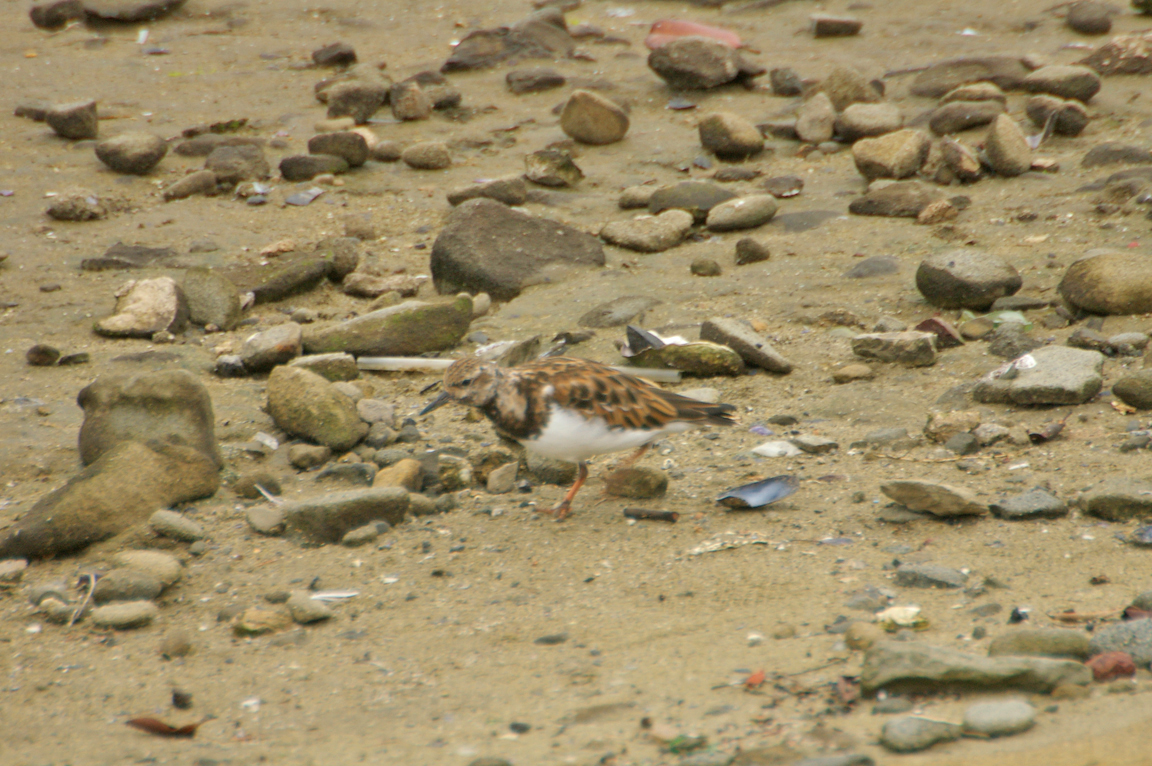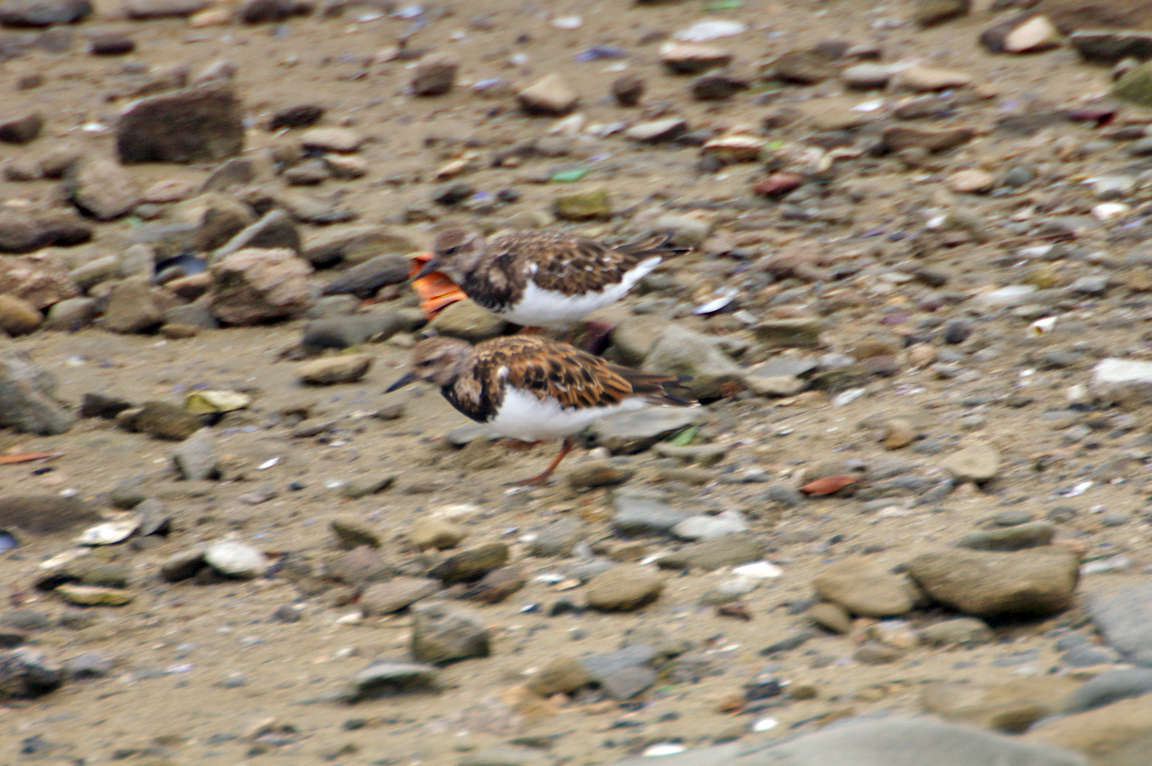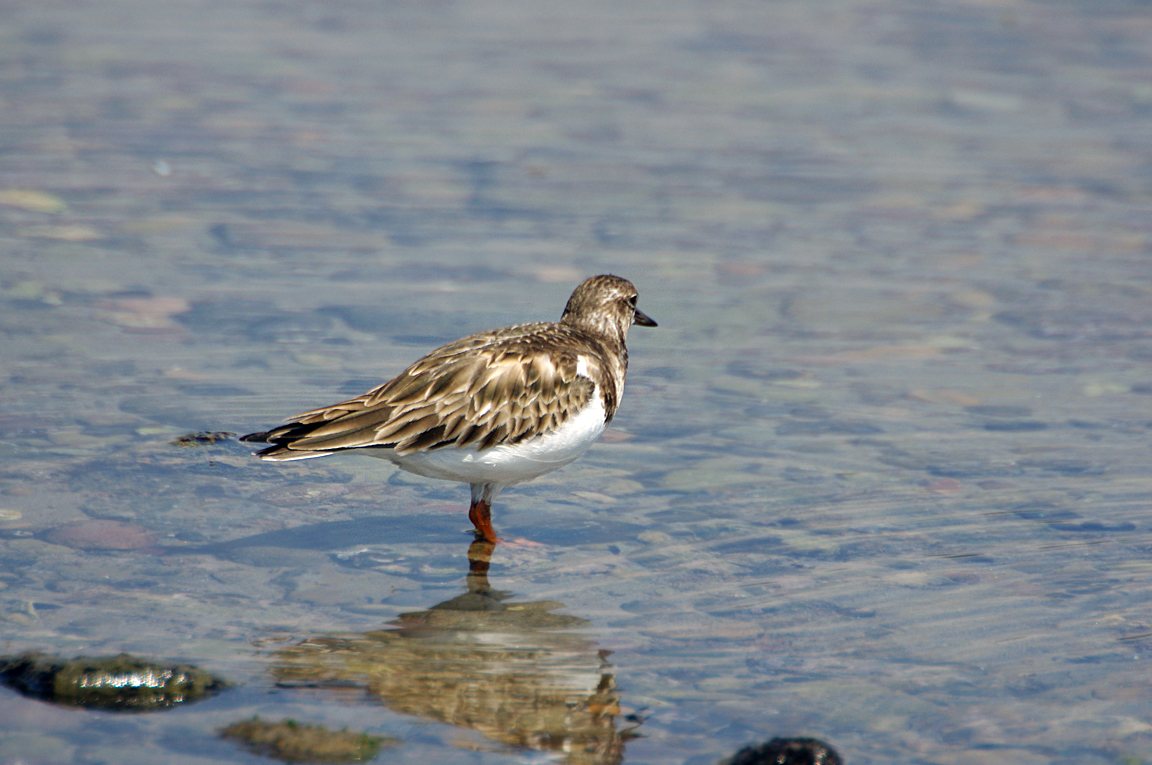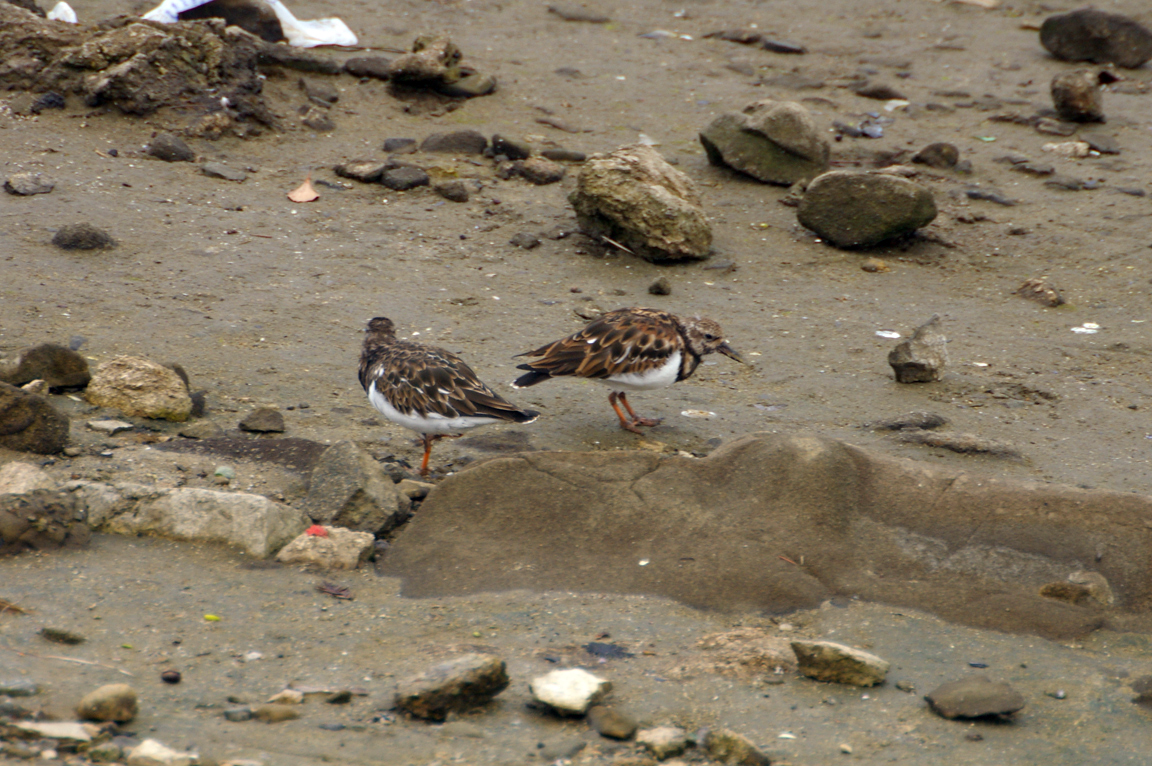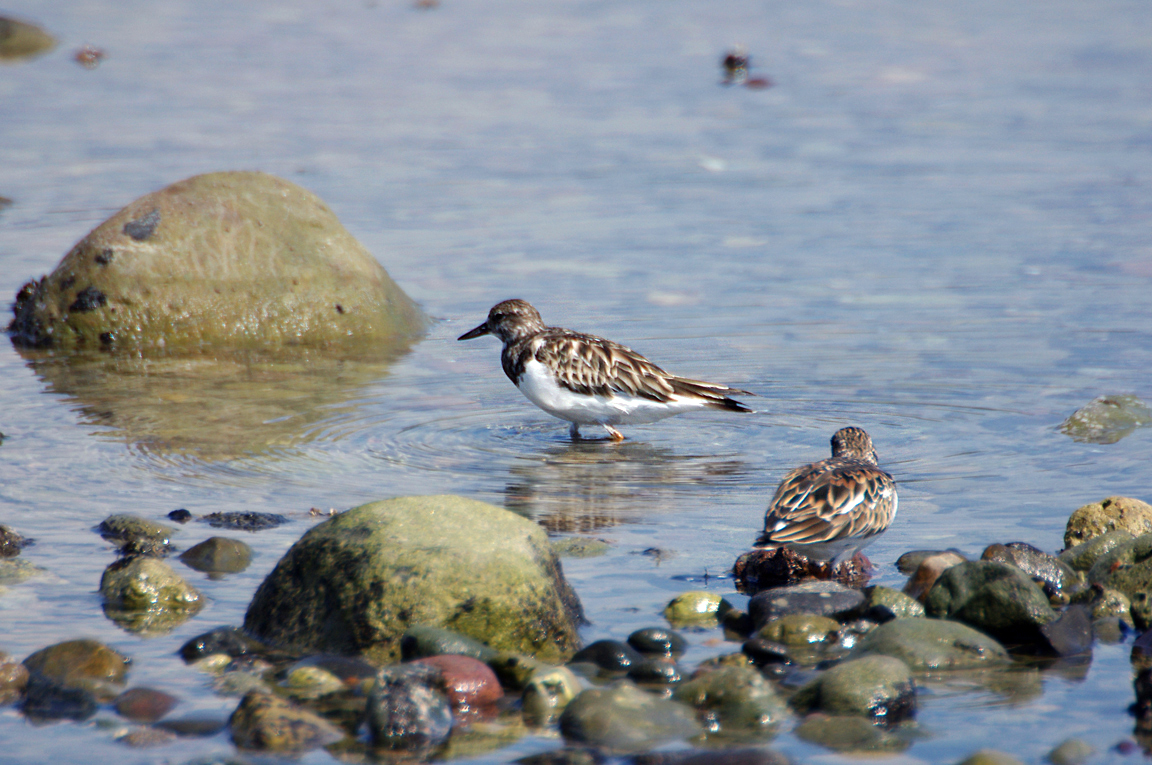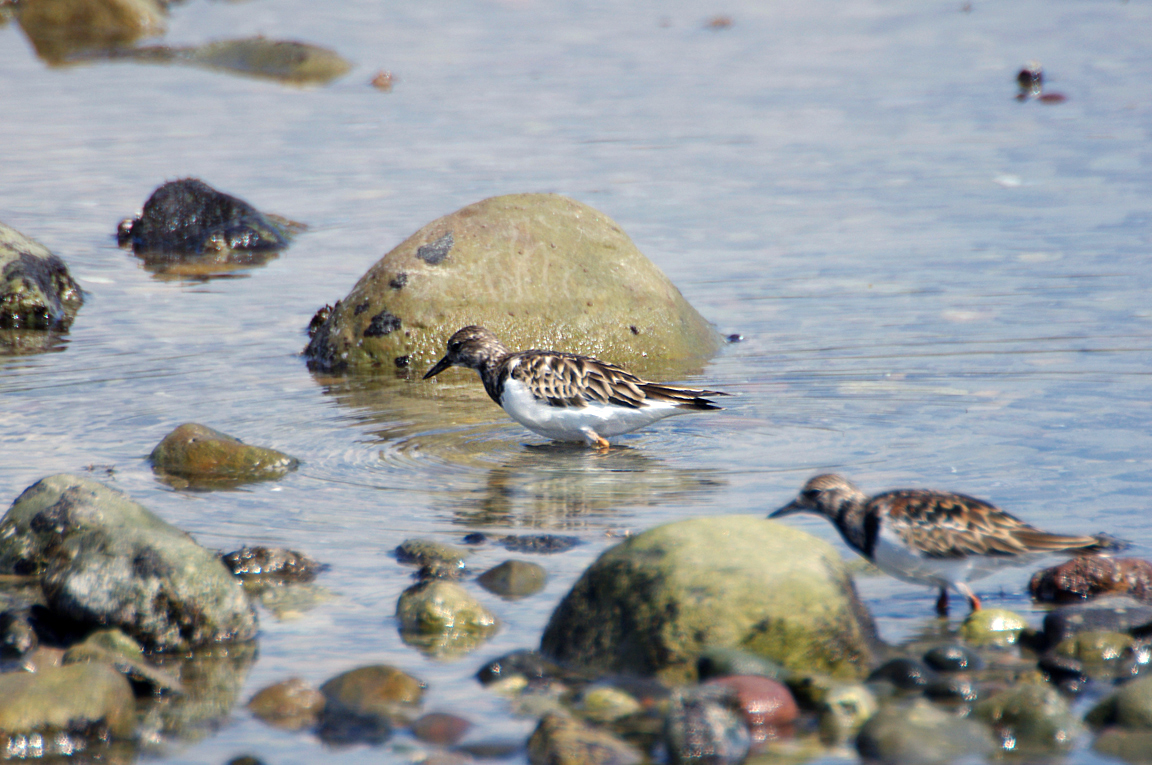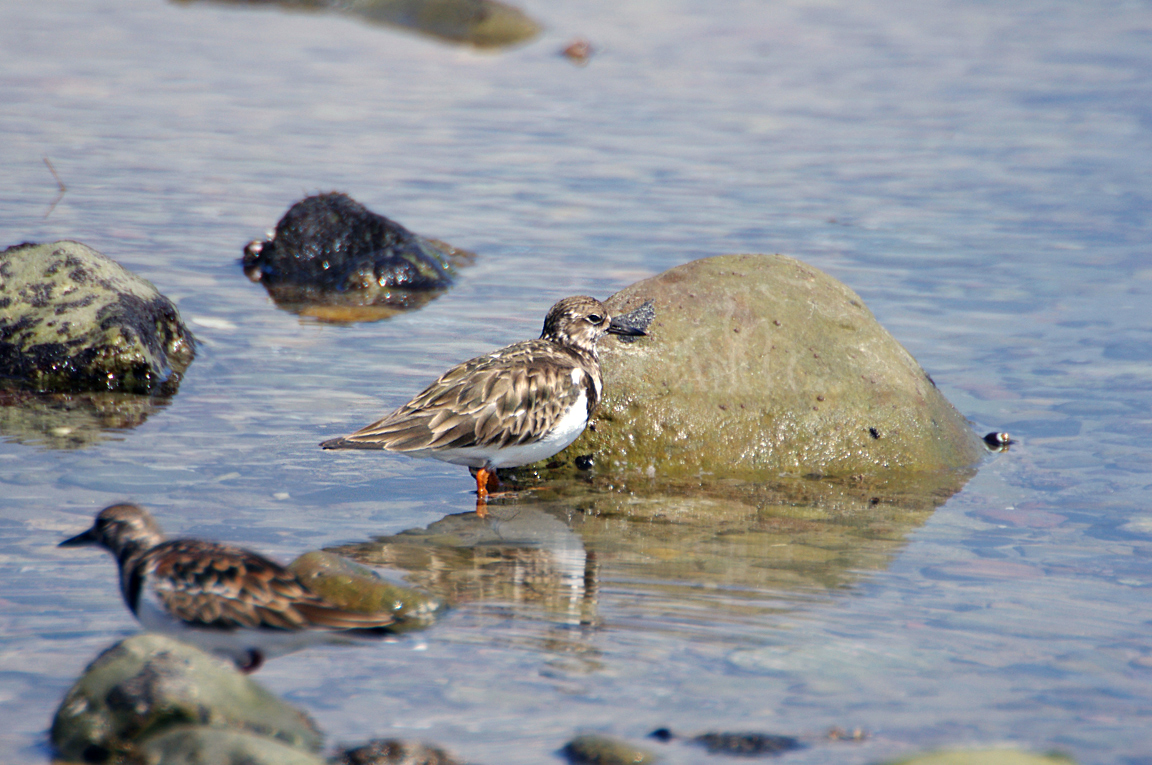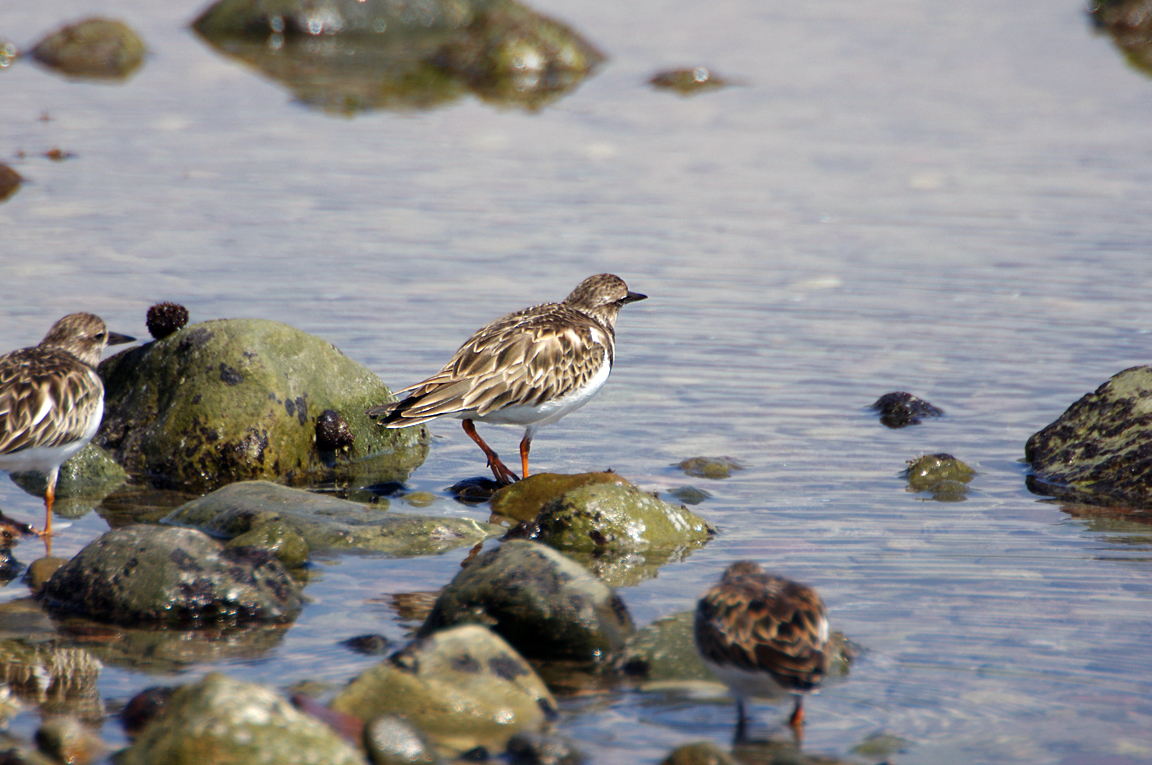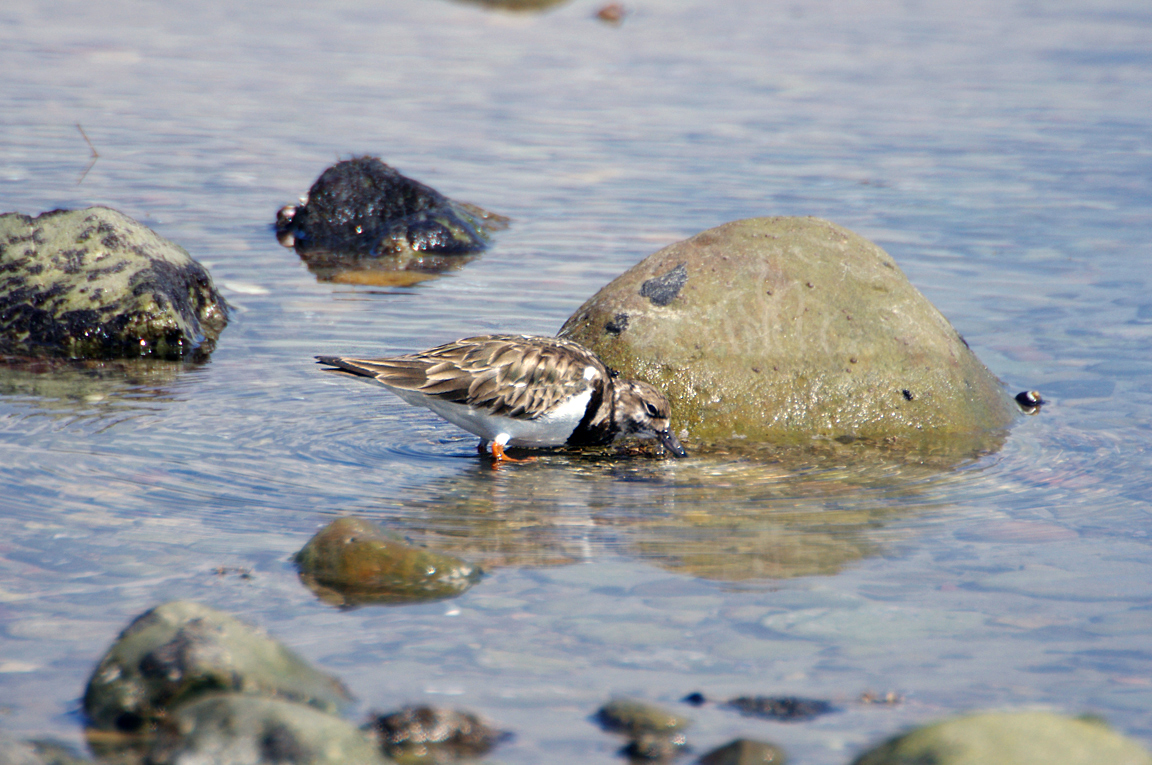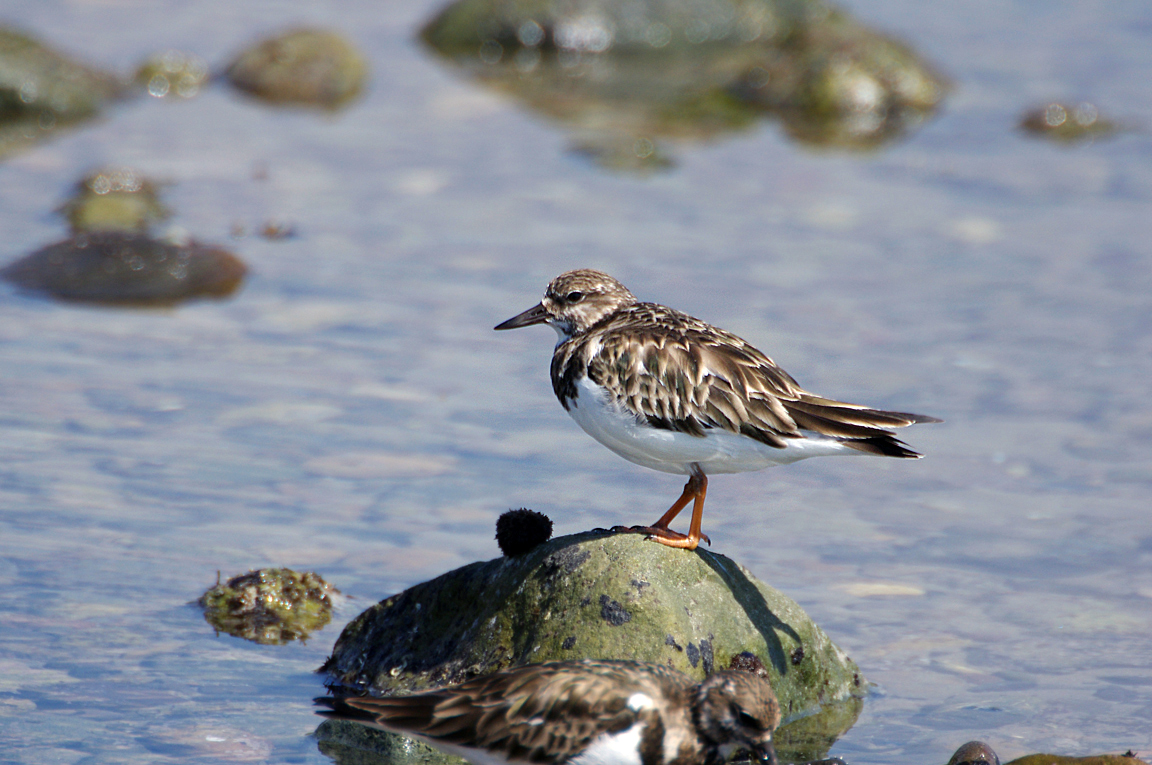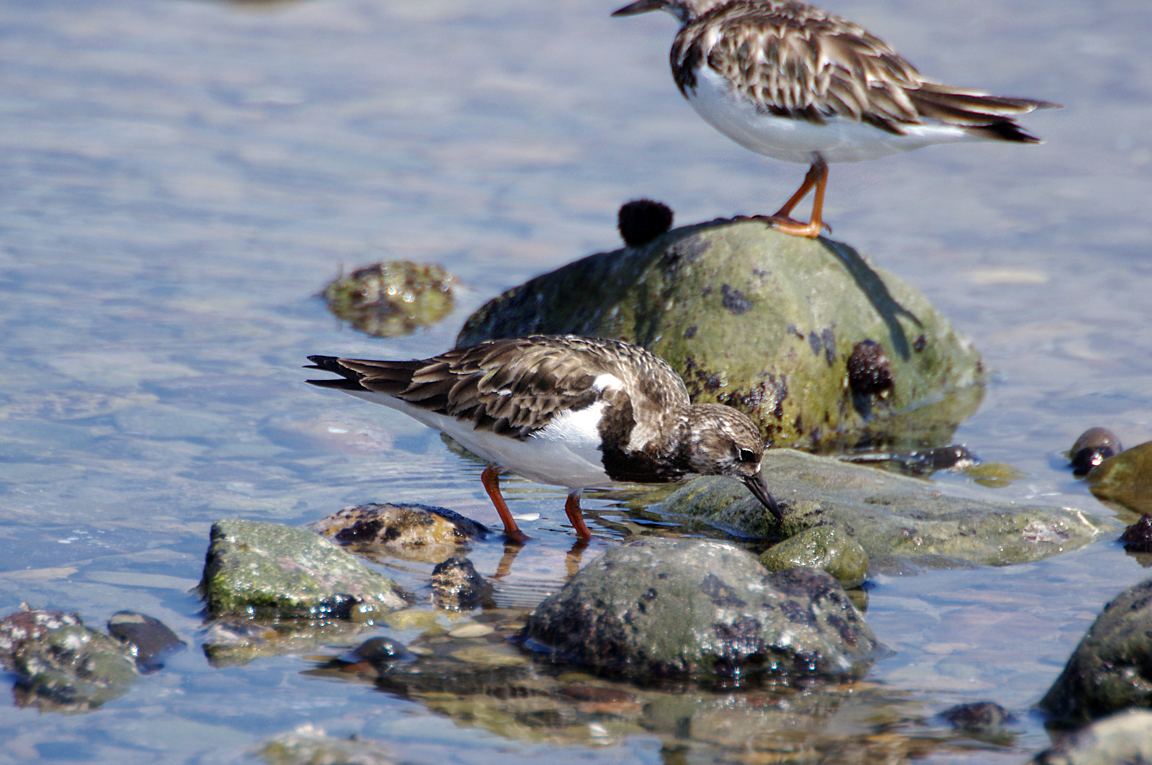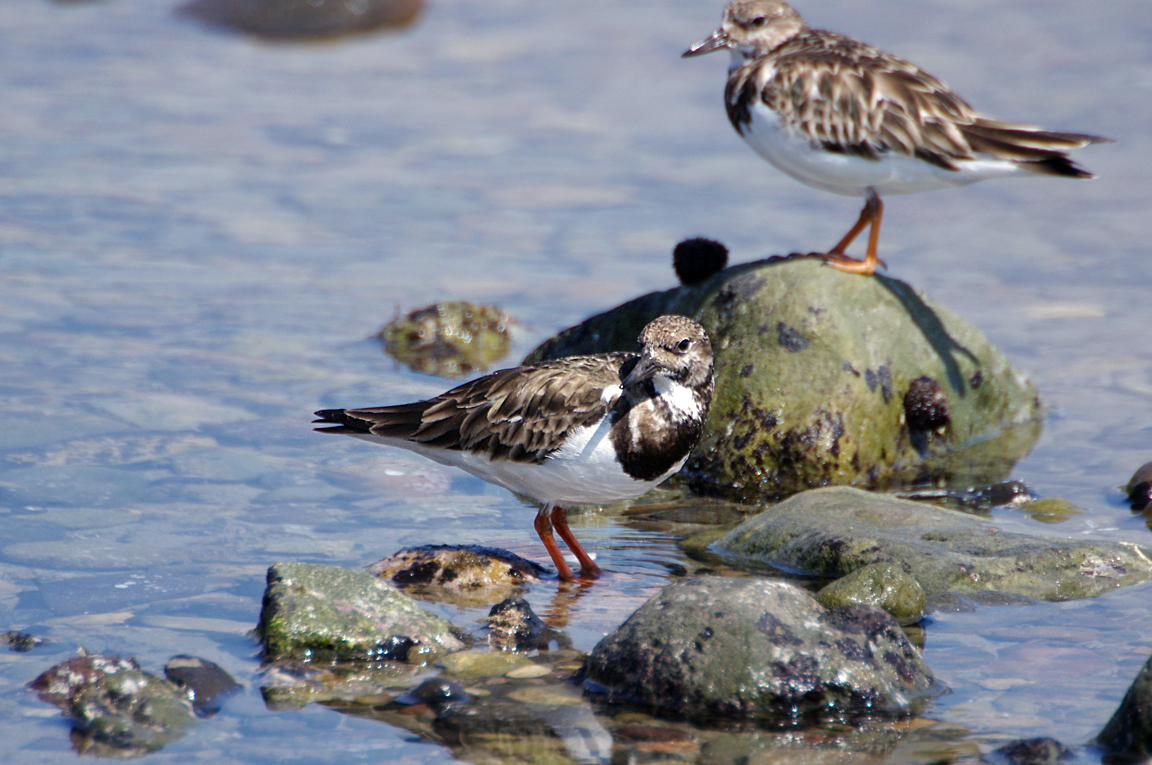|
|
|
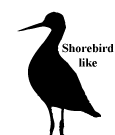 |
Ruddy Turnstone
|
| Arenaria interpres | |
A stocky, brightly patterned shorebird, the Ruddy Turnstone can be seen actively pecking, probing, and flipping over stones alony rocky shores.
Interesting Information
-
The male Ruddy Turnstone makes nest-like scrapes in the ground within his territory, often close to the final site selected by the female. The male's scrapes are made before the female starts to lay eggs, and are part of the courtship and nest site selection process. No eggs are laid in the scapes the male makes.
-
As their name suggests, turnstones often forage by turning over stones and other objects.
Description
Adult Description
-
Length Range: 23-25 cm (9-10 in)
-
Weight: 111 g (3.9 oz)
-
Size: Medium (9 - 16 in)Stocky shorebird.
-
Short, dark bill fairly thick with a slight upturn.
-
Short, orange legs.
-
Black-and-white (or gray) clown-like pattern on face.
-
Bold white-and-dark wing pattern visible in flight.
-
White lower back.
-
White tail with black terminal band.
-
Bright reddish sides in breeding plumage.
Sex Differences
Sexes Similar
Immature
Resembles winter adult, but slightly more brownish overall with paler head.
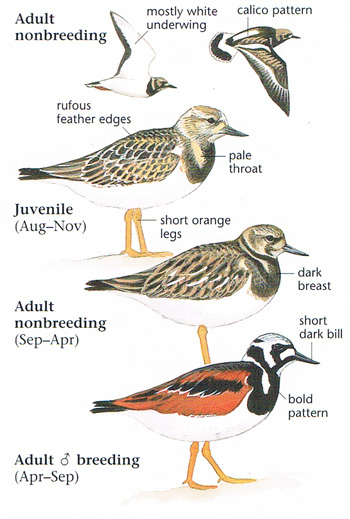
Photo taken from: The Sibley Field Guide by David Allen Sibley
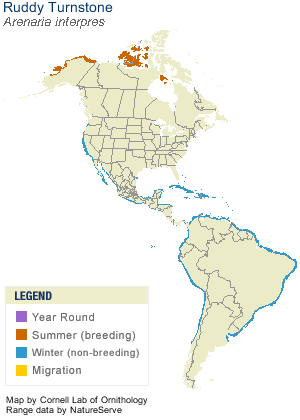
© 2003 Cornell Lab of Ornithology
|
Habitat |
|
Breeds on rocky arctic coasts and tundra. On migration and in winter, mostly along rocky shores, but also sand beaches and mudflats. |
|
Behavior |
|
Uses oddly-shaped bill to flip and turn stones, algae, sticks, and other items to find food underneath. Probes in cracks. Pecks at food on surface of rocks. |
|
Food |
|
Aquatic invertebrates and insects. Also carrion, garbage, and bird's eggs. |
Taxonomy
| Kingdom: | Animalia |
| Phylum: | Chordata |
| Subphylum: | Vertebrata |
| Class: | Aves |
| Order: | Charadriiformes |
| Family: | Scolopacidae |
| Genus: | Arenaria |
| Species: | Arenaria interpres |
| Subspecies: | Arenaria interpres interpres |
| Arenaria interpres morinella |
Similar Species |
|
Black Turnstone of West Coast has similar wing pattern, but has black legs, lacks any red in plumage, and does not have the intricate face pattern. |
|
Bird Sound |
|
A short rattling chuckle or twittering. |
|
Eggs look like this |
|
Photo taken from: ARCTOS Collaborative Collection Management Solution |
